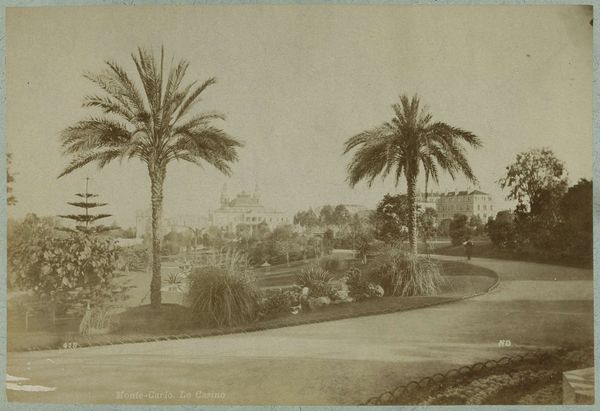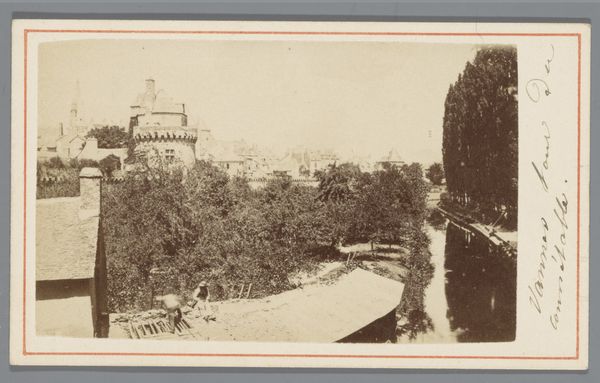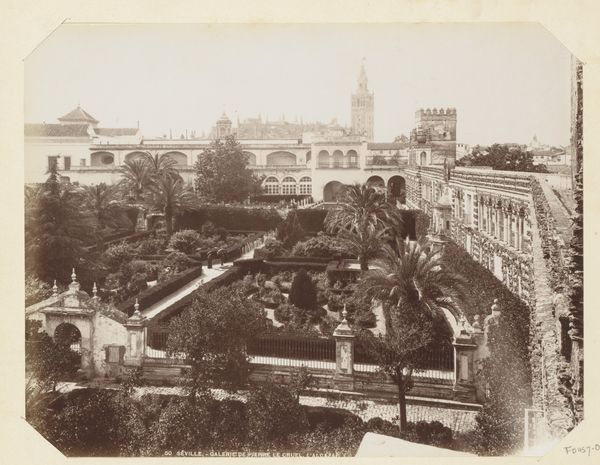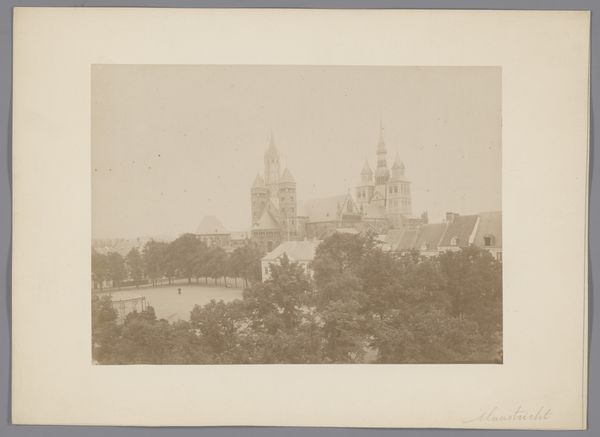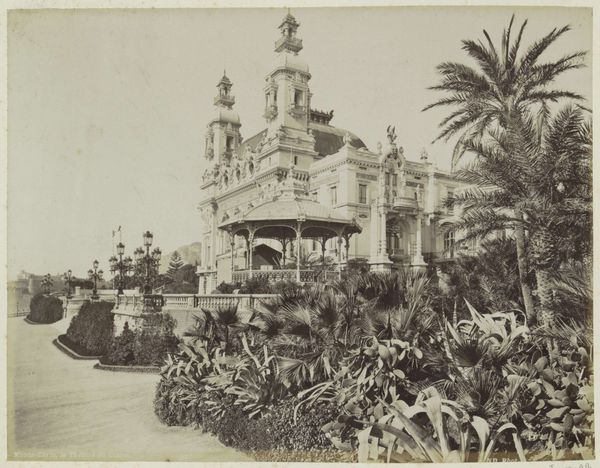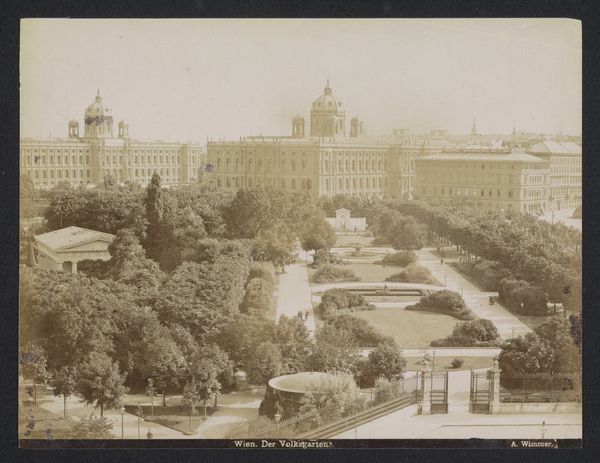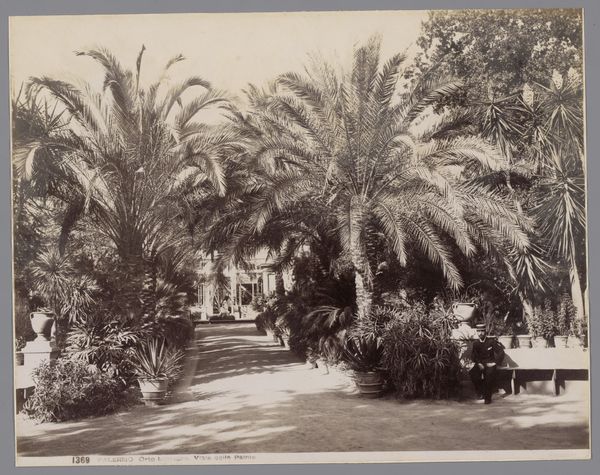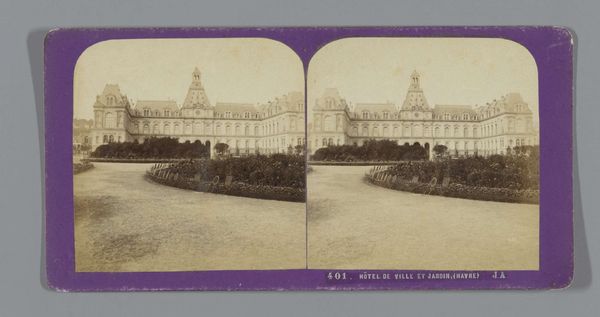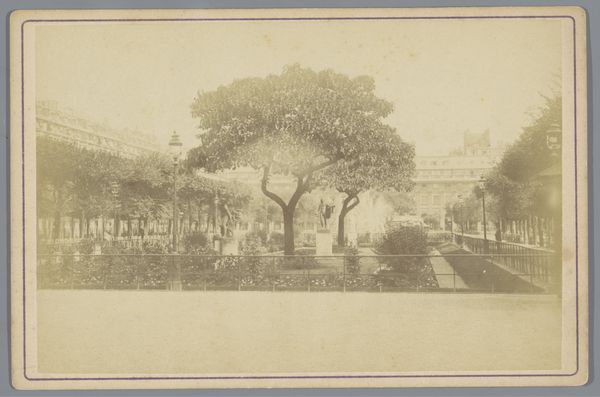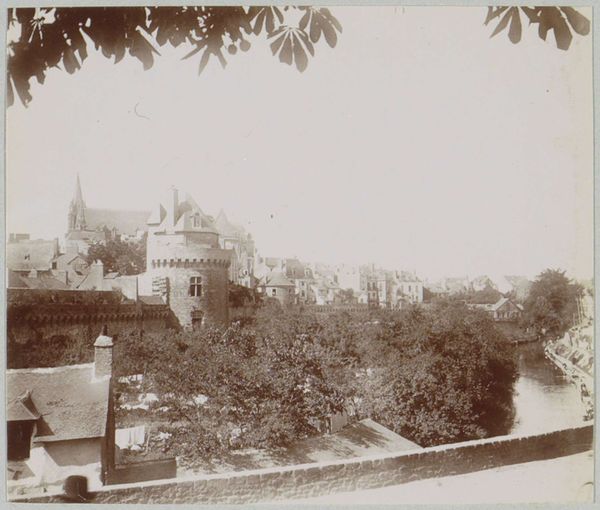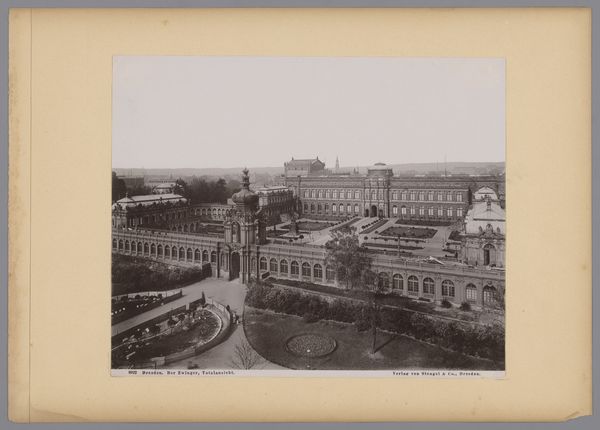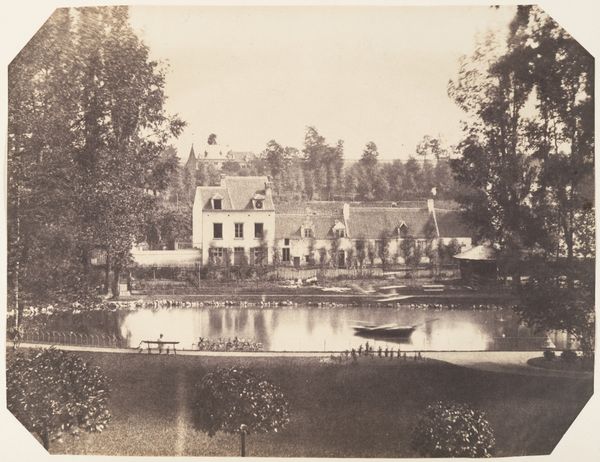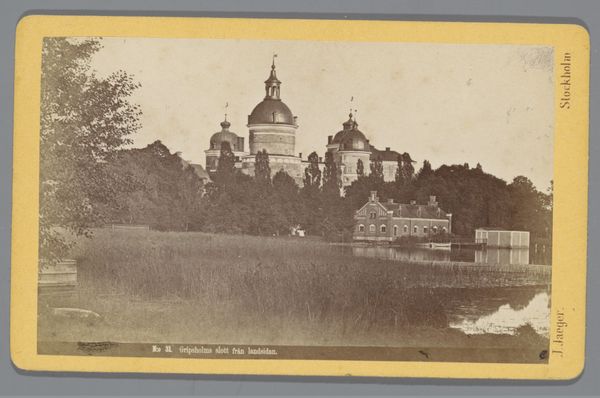
photography
#
landscape
#
photography
#
orientalism
Dimensions: height 207 mm, width 267 mm
Copyright: Rijks Museum: Open Domain
Curator: What a striking image, isn't it? This photograph, entitled "Tuinen bij het Monte Carlo Casino," roughly translates to "Gardens at the Monte Carlo Casino," and it dates from between 1860 and 1890. The gardens are certainly on full display. Editor: Absolutely, the way the light hits that agave plant in the foreground... it commands attention. It is like a scene set for leisure and luxury, with a slightly melancholic touch due to the sepia tone. Curator: Precisely. The composition directs our gaze toward the casino itself, a rather ornate building, don’t you think? And then note how the photographer arranged the garden elements in layers—the pond, various shrubbery, those whimsical canopies—all to guide the eye to the focal point, that casino architecture. Editor: The deliberate placement of exotic vegetation is fascinating. The materials tell a story of colonialism and trade—these weren't local plants but imports, meticulously placed here through the labor of many, transforming a space for an elite's amusement. The production and trade networks are all encoded into this very idyllic image. Curator: You raise an important point about labor. Now, thinking about the photograph itself, let’s focus on the tonal range and the textures captured. Observe the soft gradations in the sky and how they contrast with the sharply defined foliage and architectural details. This lends a sense of depth to the scene. Also the geometry present is striking; it harmoniously connects nature and architecture. Editor: And how interesting it is to note the consumption patterns associated with photography in that era—a tool for the wealthy to document and share their exclusive experiences, contributing to a certain colonial gaze back home. Photography here memorializes an imagined "Orient" made accessible, almost domesticated. Curator: Yes, exactly. A testament to control and the carefully curated experience. I am fascinated by its layers, a record of designed beauty, a manufactured tranquility. Editor: And for me, it becomes a document about wealth, labor and exoticizing a foreign other, reminding us to question who is invited into the frame, and who remains behind it to produce such a vision.
Comments
No comments
Be the first to comment and join the conversation on the ultimate creative platform.
